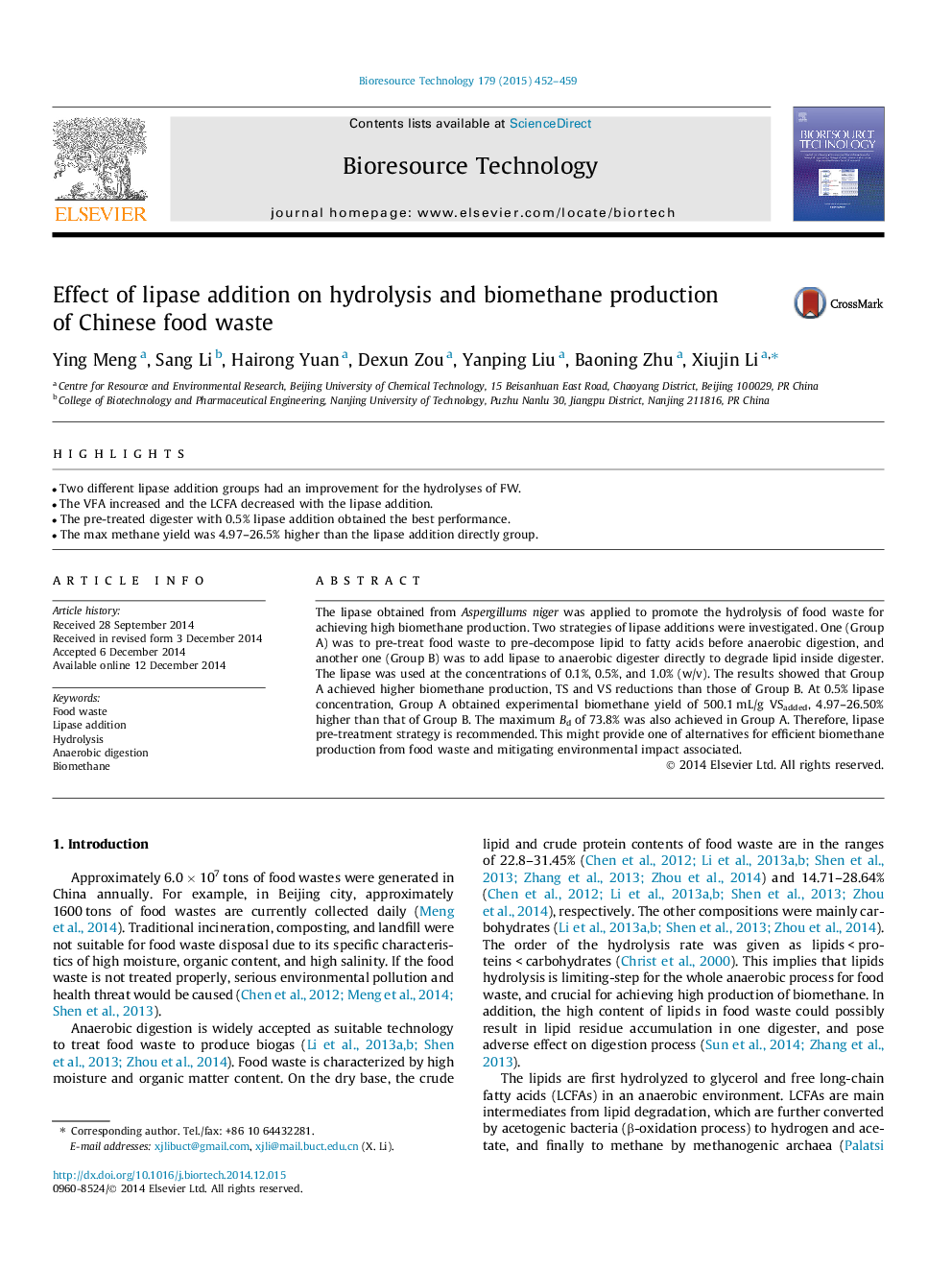| Article ID | Journal | Published Year | Pages | File Type |
|---|---|---|---|---|
| 680152 | Bioresource Technology | 2015 | 8 Pages |
Abstract
The lipase obtained from Aspergillums niger was applied to promote the hydrolysis of food waste for achieving high biomethane production. Two strategies of lipase additions were investigated. One (Group A) was to pre-treat food waste to pre-decompose lipid to fatty acids before anaerobic digestion, and another one (Group B) was to add lipase to anaerobic digester directly to degrade lipid inside digester. The lipase was used at the concentrations of 0.1%, 0.5%, and 1.0% (w/v). The results showed that Group A achieved higher biomethane production, TS and VS reductions than those of Group B. At 0.5% lipase concentration, Group A obtained experimental biomethane yield of 500.1Â mL/g VSadded, 4.97-26.50% higher than that of Group B. The maximum Bd of 73.8% was also achieved in Group A. Therefore, lipase pre-treatment strategy is recommended. This might provide one of alternatives for efficient biomethane production from food waste and mitigating environmental impact associated.
Related Topics
Physical Sciences and Engineering
Chemical Engineering
Process Chemistry and Technology
Authors
Ying Meng, Sang Li, Hairong Yuan, Dexun Zou, Yanping Liu, Baoning Zhu, Xiujin Li,
